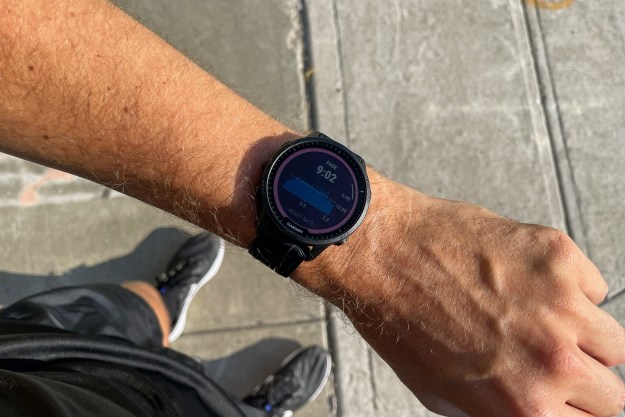Thanks to science fiction, we can’t think about artificial intelligence without summoning the ghost of 2001: A Space Odyssey’s killer AI HAL 9000; we have to make the obligatory Terminator reference in any story about cutting edge robots; and the picture that immediately springs to mind when we mention robotic exoskeletons are bulky pieces of kit straight out of Iron Man or the underrated Tom Cruise flick Edge of Tomorrow.
However, when it comes to that last research topic, investigators at the Harvard Biodesign Lab are doing everything they can to change our perceptions and convince us that robotic exoskeletons don’t have to be rigid cages surrounding a person’s limbs, applying torque directly to their joints to aid them with a specific motion.
While this approach can be hugely promising in helping individuals with paraplegia, it’s less necessary in other scenarios. For example, in situations where you have an individual with gait impairments, but who still has function in their lower limbs (such as a post-stroke patients or individuals with multiple sclerosis), applying the same approach is a bit like using a sledgehammer to crack a nut.
This isn’t just about saving money on hardware, either. The considerable weight of rigid exoskeletons and the energy expenditure they therefore prompt in the person wearing them isn’t something to be sniffed at. At Harvard Biodesign Lab, they’ve been developing soft robot exosuits to help with this exact problem.
“The approach our lab, and several other research labs, have taken recently is to use extremely lightweight devices to try to deliver assistance in parallel to the underlying biological muscles in order to reduce the metabolic cost of walking,” Brendan Quinlivan, a graduate student at the Harvard Biodesign Lab, told Digital Trends. “Such an approach could be used to assist soldiers or firefighters who often have to wear large amounts of equipment and could get fatigued over time. By applying assistance in parallel to the biological muscles, the theory is that the muscles will have to do less work reducing the metabolic cost of the wearer and ultimately reducing their fatigue and their potential for injury.”
The problem of what is known in the trade as ‘metabolic reduction with an exoskeleton or exosuit’ has been the work of researchers for decades now.
The problem of what is known in the trade as “metabolic reduction with an exoskeleton or exosuit” has been the work of researchers for decades now. But it took until 2013 for the first major breakthrough to be made when investigators were able to find a way to create an exosuit that would garner a 6 percent reduction in effort, compared to normal, unaided walking in a healthy person.
In a new paper published recently in the journal Science Robotics, titled “Assistance magnitude versus metabolic cost reductions for a tethered multiarticular soft exosuit,” the team of researchers at Harvard managed to push these metabolic reductions to their highest threshold yet: close to 23 percent reduction with an off-board actuation system.
These subtle exosuits won’t drag wearers around like a horror movie spirit seizing control of a person’s body. Instead, they make it easier to perform certain strenuous actions like pushing off from the ankle.
To test their exosuit, researchers strapped seven participants up to the equipment and had them walk on treadmills. They then measured the balance of oxygen inhaled and carbon dioxide exhaled as they walked, and tested this at four levels of robot assistance. The top level is where the 23 percent metabolic cost reduction came in.
Things aren’t yet perfect. As with many technologies, the eventual goal is to have it the exosuits virtually invisible for the wearer so that they get all of the benefits with none of the negatives. While the exosuit itself presently weighs only 2.2 pounds, its power supply weighs a bit more.
The current workaround is to wire this up to an external battery so the weight isn’t carried by the user. However, that wouldn’t work if a person was on the move. True, 17 pounds isn’t an insurmountable weight to carry around (it’s around one-third of a military backpack), but it’s more than a little counterproductive for something that’s meant to make it easier to move around.
Still — and no pun intended — it’s another important leap in the right direction for research.
“This study is a nice step forward in the development of the soft exosuits within our lab,” Quinlivan said. “The force sweep conducted gives us some more information on the relationship to the level of assistance and the metabolic benefit the user experiences. This is especially useful as we design new actuators and need to consider the trade-offs between actuator power and weight. The bigger the motor and batteries, the more assistance we can provide the wearer — and the higher potential metabolic reduction we can get — but that also means the heavier actuators they need to carry. Understanding this trade-off is key as we develop mobile actuation units so individuals can use this technology outside of the lab.”
Having recently partnered with ReWalk Robotics to commercialize the exosuits for the first time, hopefully that will happen sooner rather than later.
Editors' Recommendations
- This tech was science fiction 20 years ago. Now it’s reality
- Exosuits for everybody: Meet the company that’s making wearable robots mainstream
- Robotics company is offering $125K if you’ll let a robot use your face
- Harvard’s tiny, insect-inspired RoboBee X-Wing can fly using solar power



